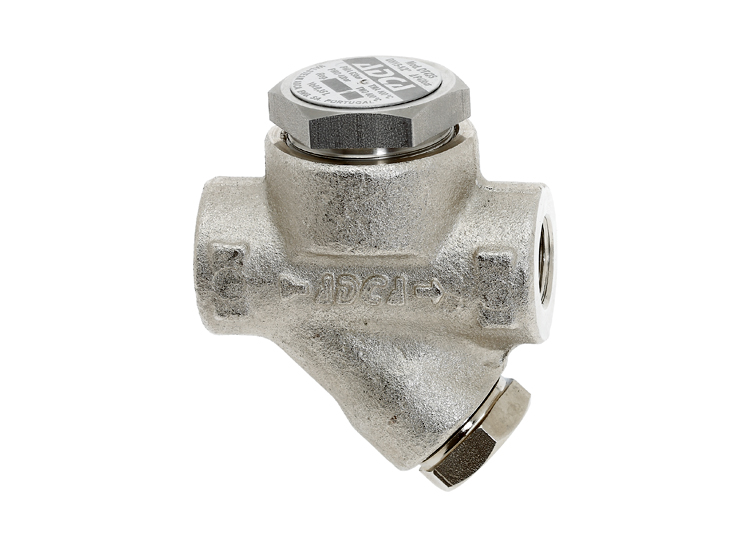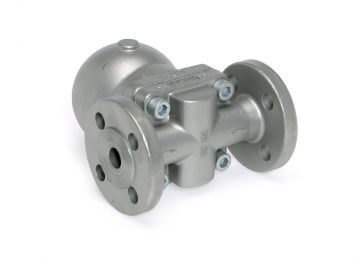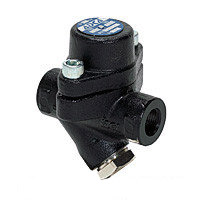
What is a Stream Trap & How do Stream Traps work?
Industrial applications that are powered by steam demand the utmost efficiency to ensure that latent heat is maximised and liquid condensate is removed as quickly as possible. This where automatic valves, known as steam traps, can prove to be an invaluable ally, as BM Engineering Supplies explain.
What is a steam trap?
Steam traps are a type of automatic valve that filter out condensate and non-condensable gases (such as air) without letting steam escape. They open, close or modulate automatically, discharging condensate as soon as it is formed in an energy efficient manner.
How do steam traps work?
The most basic form of steam trap is a disc, or short solid pipe nipple, with a small hole drilled through it installed at the lowest point of the equipment. Since steam condensate collects at the lowest point, and is around 1200 times greater in volume than hot liquid, condensate is effectively removed and the steam is blocked.
The vast majority of steam traps in current operation are mechanical or thermostatically operated.
These types of steam traps open when condensate and inert gases need to be removed and close when all the condensate is removed. The process repeats when new steam is condensed and ready to be drained.
Steam traps work best when sized specifically for the application they are used on. Generally, it is better to oversize because they will still discharge condensate when present and close or obstruct for live steam. However, an over-sized steam trap may wear quickly, waste energy and – if drastically over-sized – can cause process issues.
Types of steam trap available
Steam traps can be split into four major varieties:
- Mechanical traps
- Temperature traps
- Thermodynamic (TD) traps
- Venturi Nozzle traps
Mechnical traps
Mechanical traps (such as inverted bucket and float traps) have a float that rises and falls in relation to condensate level. This normally has a mechanical linkage attached that opens and closes the valve. Mechanical traps operate in direct relationship to condensate levels present in the body of the steam trap and have a typical service of life of three years.
Temperature traps
Temperature traps (such as Thermostatic traps, Bi-Thermostatic traps and bimetallic traps) have a valve that is driven on or off the seat by expansion and contraction caused by temperature fluctuations. They differ from mechanical traps in that they hold back some condensate until it has cooled sufficiently for the valve to open. In most cases this is not desirable because condensate needs to be removed as soon as it is formed.
Thermodynamic (TD) traps
Thermodynamic (TD) traps work on the difference in dynamic response to velocity changes in flow of compressible and incompressible fluids. As steam enters, static pressure above the disk forces the disk against the valve seat. The static pressure over a large area overcomes the high inlet pressure of the steam. Then, as the steam starts to condense, the pressure against the disk lessens and the trap cycles. This essentially makes a TD trap a ‘time cycle’ device that will open even if there is only steam present. This can lead to premature wear. Furthermore, if non-condensable gas is trapped on top of the disc, the trap can become locked shut.
Venturi Nozzle traps
Venturi Nozzle traps work by using the basic physics of two-phase flow for the effective removal of condensate from steam systems. Steam and condensate pass through the Venturi nozzle steam traps by a series of staged steps. The denser condensate liquid throttles the Venturi nozzle, which keeps the steam from escaping. Erosive eddy currents are eliminated and any contamination is carried away with the condensate. Because condensate is created and removed continuously, in a working steam system, it continuously chokes the nozzle from losing steam. These types of steam trap demand expert engineering and precise sizing in steam systems.
BM Engineering supplies comprehensive range of Valsteam ADCA steam equipment
Portuguese manufacturer, Valsteam ADCA, is a leading exponent of steam equipment. Their complete range of steam traps utilise different materials, from DN15 to DN 150, and are designed for pressure up to 80 bar and flow rates of over 100,000 Kgs/h. “An efficient steam trap defines the frontier between steam and condensed liquid and allows, if selected wisely, the proper functioning of the installation and better energy management,” they said.
Since launching in 1999, BM Engineering Supplies (BME) has grown to become one of the leading suppliers of valves to many process industry businesses in Scotland. Boasting more than 40 years of combined experience in the valve industry, BME are an official supplier of Valsteam ADCA’s comprehensive range of steam equipment including steam traps, steam control valves, reducing valves, heat exchangers, separators, and ancillary equipment such as air eliminators and steam injectors.
Speak to one of BME’s knowledgeable advisers about your steam trap requirements today by calling 0141 762 0657 or email sales@bmengineering.co.uk. For more information please visit www.bmengineering.co.uk.test.



